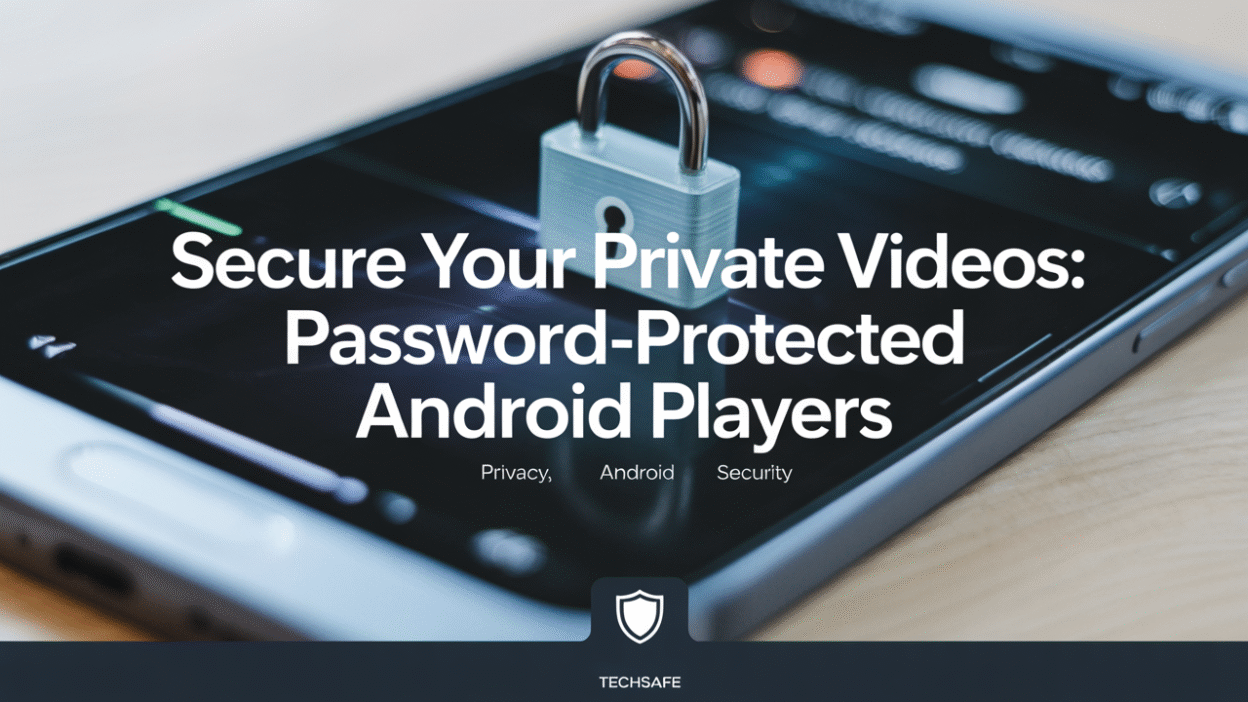When it comes to safeguarding personal media, privacy is paramount. For Android users who wish to secure their private videos from prying eyes, password-protected video players offer an essential layer of security. Whether you’re protecting sensitive footage or simply want to keep your personal moments confidential, there are several methods and applications available that allow you to lock videos with a password on your Android device .
Why Password Protection Matters for Video Files
In today’s digital age, the risk of unauthorized access to personal data is greater than ever. Private videos — whether they contain family memories, business meetings, or other sensitive content — can be vulnerable if not properly protected. A password-protected video player adds a critical barrier between your content and potential intruders, ensuring that only those with the correct credentials can view your files.
Android devices come with built-in security features such as screen locks via PINs, patterns, or biometric authentication. However, these apply system-wide and may not provide granular control over individual apps or media files. This is where dedicated password protection for videos becomes invaluable, allowing users to set unique passwords specifically for their media without affecting the rest of the device’s settings .
How to Secure Videos Using Third-Party Apps
While Android does not natively support password protection for individual video files, third-party apps fill this gap by offering robust solutions tailored to user needs. These apps typically feature intuitive interfaces combined with strong encryption standards to keep your videos safe. Here’s how you can use them:
-
Choose a Reliable App: Look for apps that offer both password protection and end-to-end encryption. Cross-platform compatibility might also be important if you plan to access your videos across multiple devices .
-
Set Up Your Vault: After installing the app, import your videos into its vault. You’ll then be prompted to create a password, PIN, or pattern that will be required every time someone tries to access the content.
-
Customize Settings: Some advanced apps let you tweak settings like auto-lock timers, hidden folders, or even decoy modes that display fake content when an incorrect password is entered .
Exploring Built-In Options
For developers looking to integrate password protection directly into their Android applications, tools like Android Studio enable the creation of custom secure environments. By leveraging native APIs related to passcode management and secure authentication protocols, developers can build apps that require users to authenticate before accessing specific functionalities within the app itself .
Best Practices for Maintaining Security
-
Use Strong Passwords: Avoid simple combinations like "1234" or "password." Instead, opt for complex strings containing letters (both uppercase and lowercase), numbers, and symbols.
-
Enable Two-Factor Authentication (2FA): If supported by your chosen app, 2FA adds another verification step beyond just entering a password, significantly enhancing security levels .
-
Regularly Update Software: Keep both your operating system and any installed security apps up to date to protect against newly discovered vulnerabilities.
By taking advantage of password-protected video players on Android, users gain peace of mind knowing their most private moments remain accessible only to themselves—or whoever they choose to share access with. As technology evolves, so too do the methods we employ to protect our digital lives; staying informed about these options ensures our personal narratives stay ours alone.


